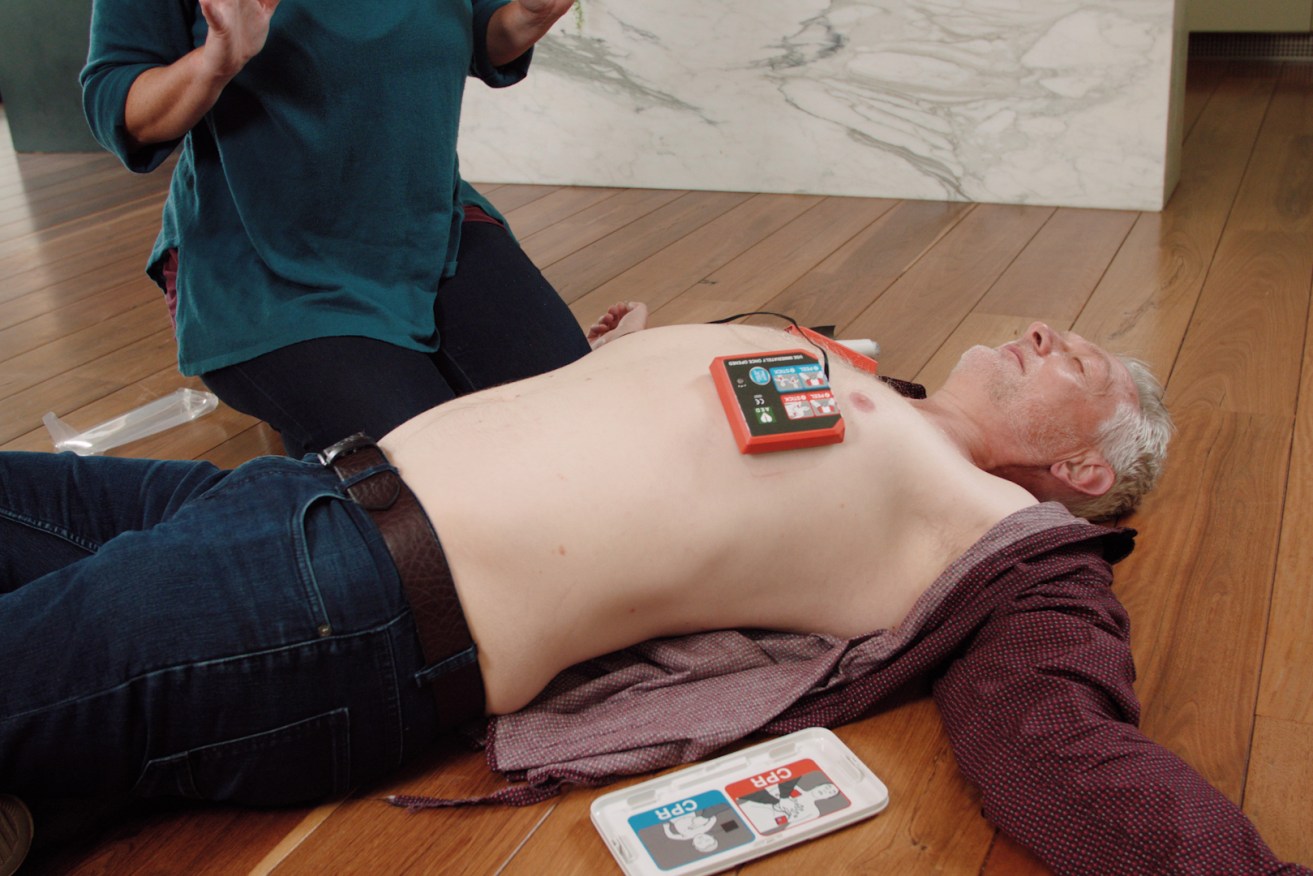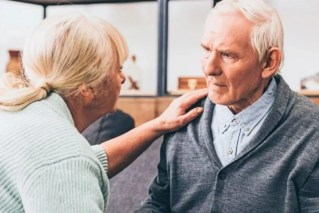Easy to use at-home defibrillator being trialled by Ambulance Victoria


A world-first defibrillator that can be carried in a handbag could help put the toll from cardiac arrest into decline.
Sudden cardiac arrest, which will kill you in minutes if not attended to, has significantly increased in Australia over the past 10 years.
At the same time, the survival rate has dropped.
The solution?
Ambulance Victoria is trialling a defibrillator – that can be carried in a handbag – with its first-responder volunteers in a bid to lift survival rates.
The man who developed the device believes that – like smoke detectors – these mini heart zappers should be in every home.
How it began
One night in 2014, Donovan Casey was in bed, studying for his MBA. His wife Sarah, then 39, was lying next to him, presumably asleep.
Suddenly she started making clucking noises. Mr Casey thought she was joking around. Then he realised she was in trouble.
“Sarah was unconscious, unresponsive and not breathing normally – the signs I now know mean she was experiencing a cardiac arrest,” he said.
A cardiac arrest isn’t the same thing as a heart attack where a person is conscious and suffers symptoms, be it a pain in the chest, difficulty breathing, or feeling nauseous.
A cardiac arrest is where you are minutes from death – the heart’s electrics are out of whack and has stopped pumping blood, starving the vital organs of oxygen.
“At this point, for every minute without treatment, the chances of surviving a cardiac arrest drop by 10 per cent,” Donovan said.
Sarah had three pieces of good luck
“Her first stroke of luck was that I was next to her when it happened. She was lucky a second time because I knew CPR,” he says.
“The third stroke of luck was there were two Hatzolah ambulances around the corner when I called 000. They made it to us within about six minutes, which is super fast when it comes to emergency response times.”
By the time the Hatzolah volunteers made it to the flat, Donovan had been performing CPR for close to 10 minutes.
“This kept Sarah alive long enough for the medical professionals to do their job. They quickly moved me out of the way and got defibrillator pads onto her chest,” he said.
“It took them over 40 minutes to save her life, and get her stabilised enough to move her to hospital.”
From a crisis to a mission
What Mr Casey learned from this terrifying event was, “we can’t do anything about the unpredictability of sudden cardiac arrest, but we can be prepared”.

Another heart-stopping moment: Sarah and Donovan Casey about to jump from a plane.
When Sarah’s sudden cardiac arrest happened, he says, “I was a customer for a device that didn’t exist. So, we invented it”.
‘It’ being the “world’s first personal defibrillator”, which Mr Casey believes “will save millions of lives around the world”.
The device is called CellAED – AED meaning ‘automated external defibrillators’.
It became available to consumers in late 2021 – and there were nearly 30,000 pre-orders when the website first went live.
Thirty thousand? Here’s some irony
According to Ambulance Victoria, about 30,000 Australians experience cardiac arrest each year.
Only one in 10 of those that occur out of hospital survive.
Although sudden cardiac arrests are naturally, in the public’s mind, associated with heart disease, they can also occur in individuals with no history of heart problems.
They can happen in babies and seemingly healthy young people.
The only thing that can save you if this happens in the street or at home is a bystander who knows and is willing to apply CPR – and a quick zap with a defibrillator.
The Ambulance Victoria trial
According to Ambulance Victoria, in the past 10 years, “there has been a significant increase in both sudden cardiac arrest numbers and rates in Victoria”.
As reported in the Victorian Ambulance Cardiac Arrest Registry Annual Report, there were 6761 cases recorded in 2019-20.

Nearly 30,000 people pre-ordered when it was granted regulatory approval.
At the time, it was the highest figure ever recorded in the state.
The following year saw another record high, a 2.5 per cent jump from the previous year to 6934 out of hospital patients treated.
Then, in 2021-22, during COVID-19 lockdowns, there were 7361 incidents recorded – “the highest ever in history”.
First responders armed with defibrillators
How to lift survival rates?
Ambulance Victoria is trialling Mr Casey’s handbag-ready device with its GoodSAM network of volunteer responders.
These are off-duty nurses, paramedics, doctors, police, fire and first-aiders who are contacted via an app that indicates when there is a cardiac arrest in play nearby.
The first responders provide basic life support to those nearby in cardiac arrest while an ambulance is en route.
Until now they’ve relied on their hands, doing CPR. Now, many are carrying Mr Casey’s heart whacker, just in case.
We’ll endeavour to report on the trial’s findings when they’re made available.








